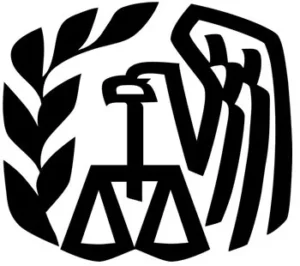
In late December 2019, Congress enacted the SECURE Act, which, among other things, amended the rules governing required minimum distributions (RMDs) payable to a beneficiary of an owner of an IRA or a beneficiary of a participant in an “individual account plan”[1] who died on or after January 1, 2020. In general, these new rules eliminated the “stretch” IRA, which previously allowed certain beneficiaries to withdraw distributions from the inherited IRA over their lifetimes. Instead, under the new rules the beneficiaries (with four exceptions described below) are required to withdraw all assets in an inherited IRA within 10 full calendar years following the IRA owner’s death.
In general, for most beneficiaries, the new rules are fairly simple. If you inherited an IRA from someone who died on or after January 1, 2020, you are required to withdraw all funds in the IRA no later than December 31 of the 10th full calendar year following the death of the individual from whom you inherited the IRA.
For example, assume your father was a participant in his employer’s 401(k) plan and also had a personal traditional IRA. At age 57 your father passed away on February 1, 2024, and named you as the beneficiary of his account balance in the 401(k) plan and his IRA. Later in 2024, you transferred the 401(k) account balance and the IRA directly to an inherited IRA for your benefit. In this example, you will have no RMDs in the first 9 calendar years following your father’s death. Under the new rules, you will be required to withdraw all funds held in your inherited IRA by December 31, 2034, the last day of the 10th full calendar year following your father’s death.[2]
Despite this sounding very simple, Congress has carved out exceptions and the IRS has complicated the rules based on its interpretation of the law as passed by Congress in 2019.
To begin, the “stretch IRA” has been preserved for the following 4 classes of beneficiaries:
- Surviving spouses.[3]
- A child of the decedent under the age of 21.
- A beneficiary who is not more than 10 years younger than the decedent.
- An individual who is disabled or chronically ill.
If you are a beneficiary described in one of the 4 classes described above, you are still required to withdraw funds from the inherited IRA over your lifetime beginning in the year following the decedent’s death.[4] And, if you are the surviving spouse of the decedent, the 10-year withdrawal rules described in this article do not apply to you and, in addition, you can transfer the inherited funds from the IRA into your own IRA and are not required to commence withdrawing funds from your own IRA until you reach your “required beginning date” (“RBD”).[5]
What will be addressed is how the new RMD rules impact individuals who can answer “yes” to the following four questions:
- Have you been named as a beneficiary of an individual who owned an IRA (other than a Roth IRA [6])?
- Did the individual who named you as a beneficiary die on or after January 1, 2020?
- Are you someone who is not described in the four classes of beneficiaries described above?
- Had the decedent already reached his or her “required beginning date” before dying (see footnote 4 below)?
What also seemed clear following the enactment of the new rules was the requirement that, if you were not in one of the four classes of beneficiaries described above, you had to withdraw all amounts held in the IRA by December 31 of the 10th full calendar year following the death of the decedent. No longer could you “stretch” the distributions over your life expectancy.
For example, if your mother died on March 1, 2024, and named you as a beneficiary of her IRA, and you were 21 years of age or older, the only RMD requirement would be that all assets in the IRA must be distributed to you by December 31, 2034. For the first 9 years following your mother’s death (years 2025–2033), there are no RMD requirements, but all assets must be distributed in the 10th year following your mother’s death and no later than December 31, 2034.
It seemed pretty straightforward that, if you were not a surviving spouse or one of the other three beneficiaries described above, you had no RMD requirement for 2025, the year following your mother’s death. However, the IRS issued proposed regulations interpreting the new rules in February 2022. These proposed regulations caught nearly everyone in the retirement planning community by surprise, including the writer of this article.
Contrary to what most of us thought, if the decedent had reached his or her RBD as of the date of death, a beneficiary’s RMDs must commence by December 31 of the calendar year following the decedent’s year of death. These RMDs would continue through years 1-9 following the decedent’s year of death, with the beneficiary being required to withdraw all remaining assets in the inherited IRA no later than December 31 of the 10th year following the decedent’s death.
For example, assume in the above example that your mother, who died on March 1, 2024, was age 75 when she passed away. Your mother had reached her RBD and had been taking RMDs from her IRA for several years prior to her death. It is clear that you will be required to withdraw all assets in your inherited IRA by December 31, 2034. But, in addition, under the IRS’s proposed regulations, you will also have the requirement to commence withdrawing RMDs calculated over your life expectancy, for the 9 full calendar years following your mother’s death, commencing in 2025 through 2033. Then, in the 10th year, all assets in the inherited IRA must be distributed to you no later than December 31, 2034.
Again, this result caught almost everyone by surprise. Because the IRS had not issued its proposed regulations until February 2022, many beneficiaries of decedents who had attained their RBDs and died on or after January 1, 2020, had missed their RMD for 2021. Because of that, the IRS issued a Notice that it would not finalize its controversial regulations until at least 2023 and, has since, most recently in IRS Notice 2024-35, announced that it will not finalize the regulation enforcing the rule until after the 2024 calendar year.
Through the end of this year in 2024, there is no requirement for a beneficiary of an inherited IRA to take RMDs during years 1-9 following the death of a decedent who had attained his or her RBD. However, for the same reason applicable to a beneficiary of an inherited IRA described in footnote 2 above, you may want to take distributions throughout the first 9 years, even if not required, in order to spread the tax burden and take advantage of the current low tax brackets, which are scheduled to increase in 2026 if Congress does not extend the 2018 tax laws that are due to expire in 2025. So it may be to your advantage to pay taxes on withdrawals from inherited IRAs now while rates are relatively low compared to what they may become in 2026. And if no withdrawals are made in the first 9 years, the entire inherited IRA must be withdrawn in the 10th year, which can push you into a higher marginal income tax rate. On the other hand, if you are an individual nearing retirement you may benefit by delaying distributions until you are no longer working and may be in a lower tax bracket.
The rules described in this article are complex. For questions concerning your RMD liability, contact Chuck Whetstine or your Frazer Ryan estate planning attorney.
[1] An individual account plan is, generally, a 401(k), profit sharing, 403(b) or 457(b) plan. Defined benefit pension plans are not subject to these new rules. In most instances, a beneficiary of an individual account plan will directly transfer the benefits in one of those plans to an “inherited IRA.” Accordingly, for the remainder of this article, reference will be made only to RMDs from an inherited IRA.
[2] Although there are no RMDs in years 1-9 following your father’s death in this example, you should consider withdrawing funds from your inherited IRA during the initial 9-year period so that all of the funds are not bunched into your taxable income in the 10th year, which could push you into a higher marginal income tax rate.
[3] It is important to note that, in general, the RMD rules for a surviving spouse were not changed by Congress and the new 10-year rule does not apply to a surviving spouse. This article does not address in detail all of the alternatives available to a surviving spouse who inherits retirement funds from his or her deceased spouse.
[4] Although if you are a child of the decedent under age 21, beginning in the year you attain age 21 the 10-year rule will apply meaning that you must withdraw all funds by December 31 of the year in which you attain age 31.
[5] For many years, the RBD was April 1 following the year in which an individual attained age 70½. The age of an individual has been extended several times over the last couple of years. Currently, the RBD is April 1 following the year in which an individual attains age 73. And, effective January 1, 2033, the RBD will be April 1 following the year in which an individual attains age 75.
[6] Under a Roth IRA, there is no RBD. In other words, the decedent was not required to commence withdrawing RMDs during the decedent’s life. If you are a beneficiary of a Roth IRA and are not in one of the 4 classes of individuals described in this article, there is no requirement to withdraw funds from the inherited Roth IRA in years 1-9, regardless of the age of the individual who died and named you as beneficiary, but the 10-year rule still applies to you (unless you are a surviving spouse to whom the 10-year rule does not apply).

